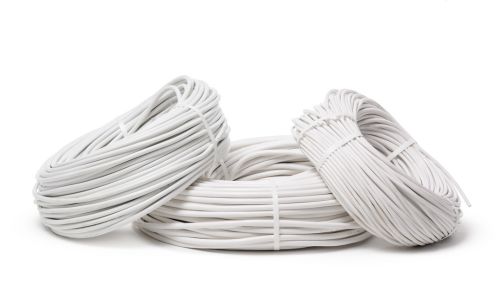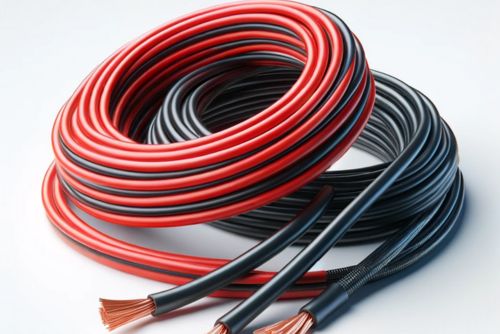
Most homeowners have done a bit of DIY, whether it was sanding and repainting an old dresser or patching a hole in the wall. But straying into working with your home’s electricity can be significantly more high-stakes as there is a potential for electrical fires and other dangers if a mistake is made. While, if you make a mistake plastering a hole, you at most have just a slightly ugly spot on the wall.
For one thing, when it comes to dealing with your home’s electricity—whether you are looking to swap light fixtures or a switch—you likely were confronted by a rainbow of wire colors. The various colors of wire all mean different things, from indicating grounds to the more dangerous wires.
However, if you aren’t sure if it’s time to call in our electricians here at HedgeHog Electric but you want to know what the wires in your home are, here is a basic primer on what the electrical wire colors.
BARE & GREEN WIRES: GROUNDS

When you see bare copper wires or green wires, then you are looking at a ground. Grounds are wires that are there to act as a fail-safe if there is a fault in the electrical circuit. Instead of the electricity discharging uncontrolled, electricity that encounters an issue can follow a grounding wire back to the earth, where the electricity can safely disperse.
You will see grounds on your appliances, electrical devices such as outlets, light fixtures, light switches, and many other things that make up your electrical system. In fact, that’s partly why we recommend that if you have older, two-prong outlets in your home that you use our wiring services to replace them. That way, you have built-in grounds in your outlets.
GREY & WHITE WIRES: NEUTRAL

Basically, as the color itself implies, a grey or white wire is a neutral wire. Now, don’t mistake it as a safe wire. When it comes to electricity, there really is no such thing as a safe wire, just ones that are less dangerous.
Instead, the electricity carried in these neutral wires is headed to your electrical panel, rather than coming from it. So, a neutral white or grey wire still has the ability to shock you if you aren’t careful. Also, if there is electrical tape around a grey or white wire, this may indicate that it is a hot wire and is carrying electricity from your electrical panel.
RED & BLACK WIRES: HOT

Okay, if you aren’t sure what constitutes a hot wire, well, it’s time to talk about the red and black wires you will find in all your common household circuitry. When we say a wire is hot, we don’t mean that it is literally hot—though it can be.
A hot wire is one that is bringing electricity directly from the electrical panel, which is pulling from your meter and the electrical grid. This makes a black or red wire by far the most dangerous wire and the one most likely to deliver an electrical shock.
These colors of wire are only meant to be used at hot wires, as they are designed to carry high voltage levels. The other wires are not, as it is expected that the power carried by the hot wires will be used and the excess electricity will cycle back to the electrical panel by lower voltage wires.
White Wires With Red Or Black Tape
As we mentioned above, white wires are sometimes used for hot wires. To indicate this, they will have red or black tape to show that it is a hot wire, not a neutral. Generally, these wires are not the main hot wire, but they can be used as the secondary hot wire on a 240-volt outlet or appliance.
LESS COMMON WIRE COLORS: BLUE & YELLOW

You may also come across blue and yellow wires. These wires are generally found in 3- or 4-way switches and the blue or yellow wires also act as hot wires. With blue and yellow wires, they act as travelers between the switches, conducting energy to the multiple switches controlled by that installation.
For instance, say that you have a light switch at one of your dining room and another switch at the other end. Both of these switches control the one dining room light. With these switches, you are able to control the light from either switch thanks to the blue or yellow wire that connects them together.
Rather than gambling on whether you identified your wires correctly, you can always contact us here at HedgeHog Electric. Our licensed and experienced electricians can help you with your residential and commercial electrical needs, and we always do it with a smile!

